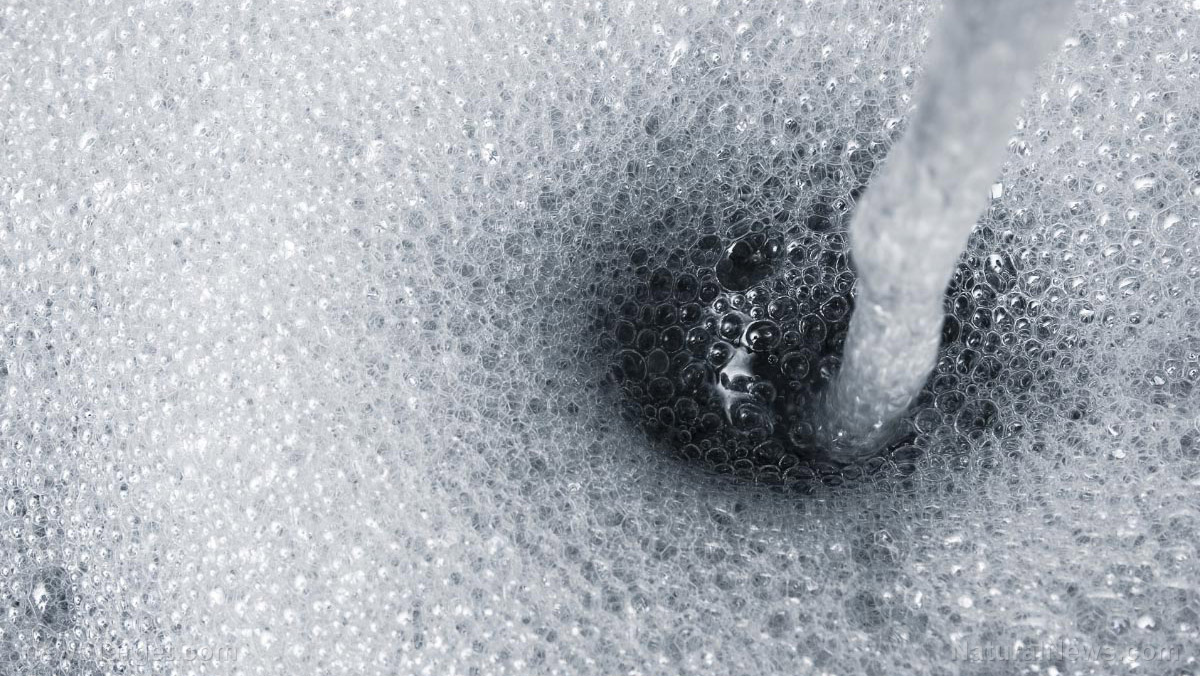Natural healing: Treating spider bites in a post-SHTF world
08/19/2021 / By Zoey Sky

In a post-SHTF world, knowing how to apply first aid to various bites can be key to survival. This is especially true if in cases of bites from venomous spiders.
If you are bitten by a common spider, a black widow spider, or a brown recluse spider and you don’t have access to emergency medical services, check out the treatments detailed below. (h/t to PrepSchoolDaily.Blogspot.com)
What to do if you get bitten by a spider
Did you know that spiders are beneficial predators? Despite their scary appearance, spiders help control harmful insects like flies and mosquitos that transmit diseases.
Unfortunately, spiders sometimes bite humans, but usually only as a defense mechanism if they are surprised by your presence or if they feel threatened.
If you get bitten by a spider, don’t panic. Kill it or ask someone to kill and catch the spider for you. Bring it when you see a healthcare professional for positive identification.
Sometimes, what you think is a spider bite isn’t actually a bite at all. Most spiders have fangs too small or fragile to break through human skin. If the bite gets bigger, consult a healthcare professional immediately because you might need medication to treat it.

First aid for common spider bites
Most spider bites aren’t too serious so don’t overreact and make the situation worse. (Related: Survival first aid: How to treat spider bites.)
Once you have confirmed that you have been bitten by a common spider, clean the bite site with soap and water.
Next, try the natural remedies detailed below. The remedies can also be applied to black widow and brown recluse bites if you can’t go to the hospital in a post-SHTF scenario.
The following treatments can be applied to relieve pain and swelling:
- Elevate the affected body part.
- Apply an ice pack.
- Apply a baking soda paste. Make the paste by combining a 3:1 ratio of baking soda to water. Apply the baking soda paste several times daily.
- Apply soothing aloe vera gel to the spider bite. Applying the gel directly to the bite offers a cooling action that can also help shrink swelling and reduce itchiness. If you have a mature aloe vera plant, cut off a leaf, wash it thoroughly, and extract the gel using a spoon. If you don’t have an aloe vera plant, buy aloe vera gel.
- Use several drops of lavender essential oil diluted in a carrier oil. Apply the mixture directly to the bite site.
- Use a couple of drops of wintergreen essential oil added to a carrier oil and apply the mixture to the bite site.
- Use a raw peeled and shredded potato poultice. Make the poultice by placing potato shreds placed in between layers of gauze. Replace the poultice when potatoes dry out.
- Use an activated charcoal poultice to draw out and absorb toxic substances. Apply it for one to two hours twice a day.
First aid for black widow bites
If you have access to a functioning medical system, you should go to the hospital immediately if you are bitten by a black widow spider. While the remedies above can help relieve the symptoms and pain caused by a black widow bite, they are not a substitute for medical care.
Black widows are found mainly in southwestern America and they’re more active at night. You might see some in your garage, barn, shed or other dark places.
Most black widow spiders are glossy black. Southern black widow spiders have the infamous red hourglass pattern on their abdomen. But not all subspecies have the pattern and it may harder to see in some spiders.
Black widow venom contains a neurotoxic protein that’s very potent. The venom will affect your central nervous system, but the reaction may vary depending on the person.
Bites from black widows form a red and raised bump. If you look hard enough and with the naked eye you may be able to identify the two punctures on your skin.
The first symptom of a black widow spider bite is intense pain, which you will feel immediately after being bitten. It may feel like an ant bite at first, then the pain will soon feel like a bee sting.
After 20 to 30 minutes, the pain will be unbearable. The pain may spread from the bite site to your back and abdomen.
Patients who have been bitten by black widow spiders often experience the following symptoms:
- Abdominal pain
- Chest pain
- Difficulty breathing
- Disorientation or confusion
- Fainting
- Increase in blood pressure
- Increase in heart rate
- Muscle cramps at the bite site or all over your body
- Nausea and vomiting
- Profuse sweating and salivation
- Shakiness
- Weakness
Black widow bites are rarely fatal. However, the symptoms may be more severe among children, seniors and those with compromised immune systems. Outcomes of the bite and symptoms will also depend on the age and physical health of the patient.
Use hot and cold compresses to relieve the pain from the bite. Try applying an activated charcoal poultice to help remove the toxin from the body. Taking a warm bath can also help soothe muscle cramps.

First aid for brown recluse bites
The brown recluse spider also called the fiddleback or violin spider because of the violin-shaped pattern on its back, is usually found in the warm, dry climates of the southern Midwest and South.
The brown recluse’s violin marking can vary in intensity depending on the age of the spider and mature spiders usually have dark violin shapes. Note that the violin-shaped marking points toward the spider’s bulbous abdomen.
If you’re not sure you were bitten by a brown recluse, look at the eyes to confirm the violin shape. Unlike most spiders, the brown recluse only has six eyes.
The spider also frequents dark, quiet areas like basements, closets and areas behind furniture.
The initial bite is usually painless. However, within eight hours you may experience any or all of these symptoms:
- A red or purple ring or target-shaped pattern around the bite site.
- Burning, itching, pain or redness at the bite site.
- A fluid-filled blister at the bite that can eventually turn into an ulcer
Additional possible symptoms can also include:
- Chills
- Fever
- Headache
- Nausea and vomiting
Some rare symptoms can include:
- Blood in urine
- Coma
- Jaundice
- Kidney failure
- Seizures
Like black widow bites, brown recluse bites are rarely fatal. However, the bites may cause severe symptoms in children, seniors and people with compromised immune systems.
The treatments detailed above for common spider bites can help if you get bitten by a brown recluse, but none of them is a substitute for medical care.
If you’re dealing with brown recluse bites in a survival scenario with no access to higher medical care, here are two alternative treatment options that you can try:
Echinacea poultice
- Apply a poultice of coneflower or black samson echinacea (Echinacea angustifolia) or purple coneflower (Echinacea purpurea) to the bite. Note that the former is much stronger than the latter.
- Change the poultice at least two to three times each day.
- Alternatively, you can take an echinacea tincture internally. Take four to eight ml of a 1:4 tincture two to three times daily.
Activated charcoal and lavender poultice
- Apply a poultice of activated charcoal moistened with lavender essential oil. Change the poultice every two to three hours.
- You can also take activated charcoal internally. Don’t panic if your stool turns black as this is a normal side effect of taking activated charcoal.
Be wary when spending time in cool, dark rooms that spiders like to hide in. If you get bitten in a post-SHTF scenario, try the remedies detailed above and seek emergency medical services if you can when bitten by a black widow or brown recluse spider.
Sources include:
Tagged Under: aloe vera, black widow spider, brown recluse spider, emergency medicine, essential oils, first aid, insect bites, off grid, prepper, prepping, remedies, spider bites, survival, survival medicine, Survival Tips
RECENT NEWS & ARTICLES
EmergencyMedicine.News is a fact-based public education website published by Emergency Medicine News Features, LLC.
All content copyright © 2018 by Emergency Medicine News Features, LLC.
Contact Us with Tips or Corrections
All trademarks, registered trademarks and servicemarks mentioned on this site are the property of their respective owners.





















